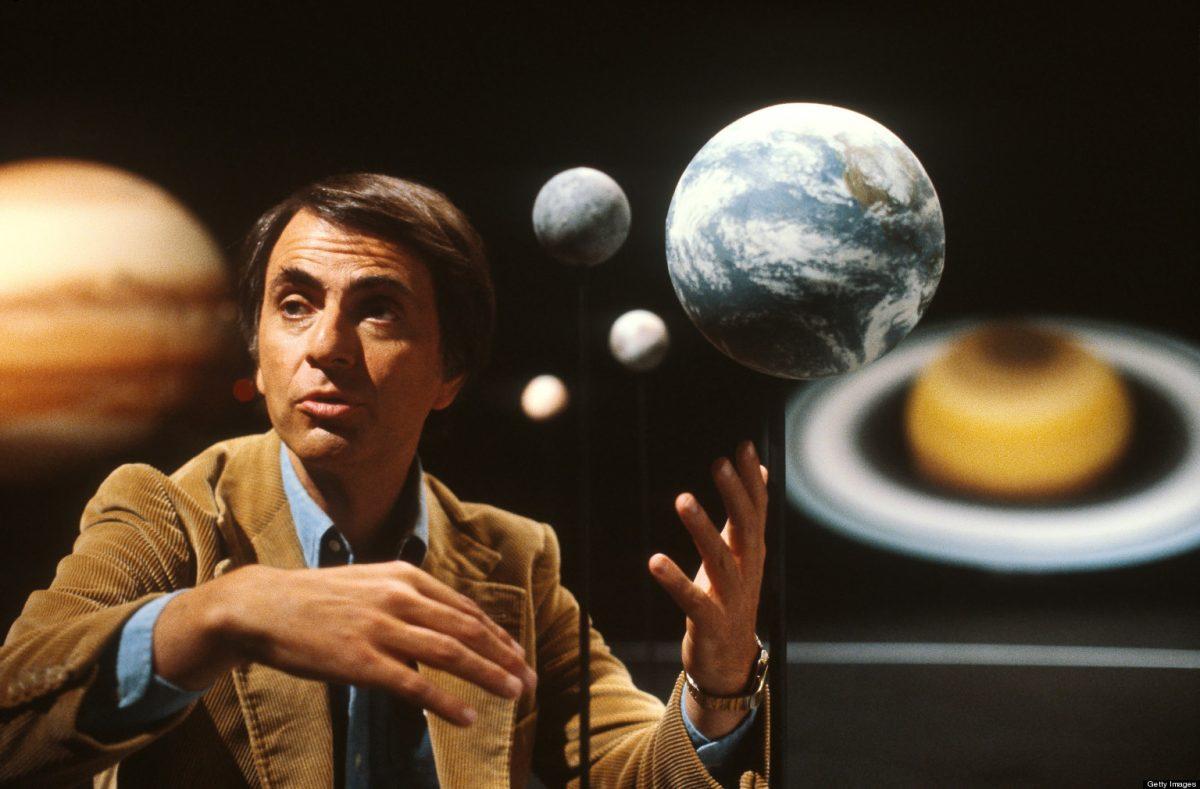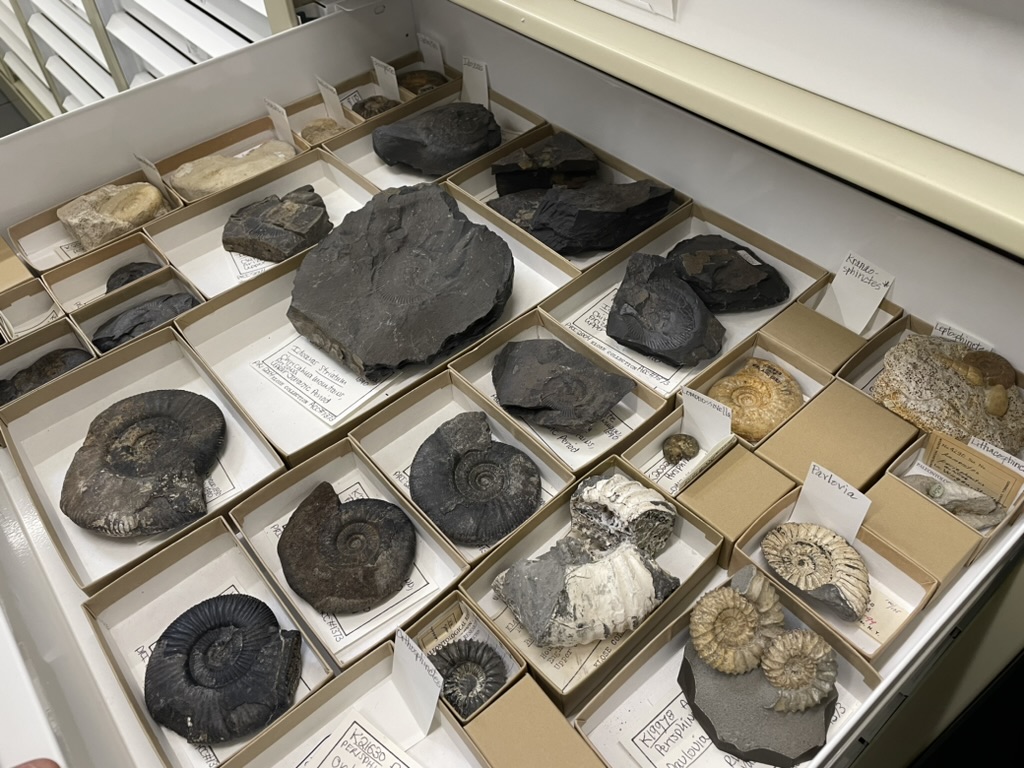As one of the superstars of the scientific community, Carl Sagan contributed to the academic community while publishing other popular science works to bring science to the masses. This December will mark the 20th anniversary of the death of Sagan, astronomer, astrophysicist and author.
Born on Nov. 9, 1934, in Brooklyn, New York, Sagan often pointed to the 1939 World’s Fair as a turning point in his life. As he looked at the many marvels and inventions on display, he told biographer David Keay, “the world held wonders of a kind I had never guessed. How could a tone become a picture and light become a noise?” This sense of wonderment led him to be a successful student in high school, and took him all the way to the astronomy and astrophysics department of the University of Chicago.
Sagan taught as an associate professor at Harvard before leaving to teach in the Department of Astronomy at Cornell University in Ithaca, New York, where he became a full professor in 1970.
In 1980, Sagan worked with his wife, Ann Druyan, and others to produce a 13-part PBS series entitled “Cosmos: A Personal Voyage.” The show won two Emmys and a Peabody Award, but more importantly, it served as many Americans’ first introduction to popular science television programming.
Jonathan Lunine, professor of the physical sciences at Cornell University, was one of many young viewers fascinated by the show. While in middle school, Lunine’s mother encouraged him to write to Sagan.
“So, I did write to him, he did answer, he wrote a very long letter back, which was a very gracious letter, and we began to have a correspondence, which only ended when I was in college finally. He and I actually worked on the same space mission together. But it was that letter, that set of letters, that really made me so excited about the possibility of going into astronomy that it galvanized my career,” he said.
Luke Keller, Dana professor in the Department of of Physics and Astronomy, was also introduced to astronomy by Sagan.
“What Carl Sagan did and his biggest contribution in my opinion, and this really influenced me, was to show people how science is interwoven into the rest of society, and he did that through looking at historically how people learn about nature through philosophy, and then it grew into the process of science,” he said.
Another of Sagan’s most famous contributions, Golden Records, which are phonograph records that remain on board the Voyager spaceship to this day. The sounds on the record represent the diversity of culture and sound on Earth and would serve as an introduction to Earth and the human race, if any advanced extraterrestrials find it.
“He had the idea along with others to include some introduction to humans, in case the spacecraft were ever found by somebody else. The reason that that’s important is because both spacecraft are now exiting our solar system and will just continue to fly forever, and you could imagine somebody might pick them up at some point or they might just by coincidence,” Keller said.
As this year marks the 40th anniversary of the Golden Record, Ozma Records has started a Kickstarter campaign to raise money to fund the release of a special edition of the record. Backers have pledged approximately $1.4 million to this project.
“I find it remarkable today that when I ask students who Carl Sagan is, even at Cornell most students don’t have any idea who he was. … It just speaks to the fact that there’s a very ephemeral nature even to very very important people,” Lunine said. “I think in the long term Carl’s legacy will never be forgotten, he will always be known as the scientist, the professor, who really told the whole world about why science is important, why humans should explore, and also about the dangers that we face in preserving our own planet so we can live on it.”
Sagan’s body of work also included contributions to NASA missions, research on the greenhouse effect on Venus and unofficial scientific consultation on the Star Wars films. During his lifetime, he received numerous awards for his academic work as well as his scientific education. Sagan believed science was not to be limited to people with Phds, rather scientific thinking must be a part of any working democracy.
“Science is more than a body of knowledge. It’s a way of a thinking, a way of interrogating the universe with a fine understanding of human fallibility. If we are not able ask skeptical questions, to interrogate those that tell us something is true, to be skeptical of those in authority, then we’re up for grabs for the next charlatan or religious who comes ambling along,” Sagan said in an interview with Charlie Rose in 1996.
His lectures and television appearances live on through television and the Internet. His work served as the foundation for those who came after him. But most importantly, he inspired the next generation of astrology enthusiasts and scientists, who continue his work today. And in Ithaca, several monuments have been dedicated to Sagan’s work and memory.

The Sagan Planet Walk exists in Ithaca as a tangible representation of the solar system. Scaled to 1:5 billion, the 1,200-meter walk was built by the Sciencenter of Ithaca. Stone monuments represent the sun and each planet radiating out from it. The Sagan Planet Walk also has an audio component, narrated by Bill Nye, who was a student of Carl Sagan. The exhibit holds the record for being the largest in the world, since a monument has been erected in Hawaii to represent the closest star to the sun, Alpha Centauri.

In 2012, Leo Villareal completed “Cosmos,” an art installation consisting of LEDs and customized computer software on the ceiling of the Sherry and Joel Mallin Sculpture Court of the Herbert F. Johnson Museum of Art at Cornell University. White points of light on a black background oscillate, expand and fold in on themselves, mimicking the expansion and destruction of countless stars and universes. The exhibit runs 24/7 as an environmentally friendly eternal flame to one of the greatest scientists of recent history.













